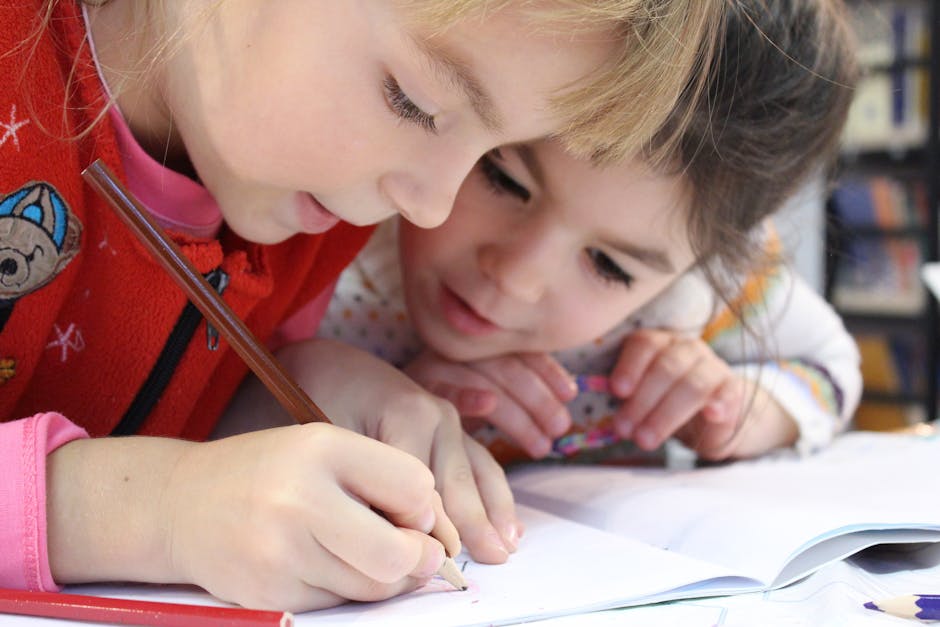Home Tags Posts tagged with "learning"
learning
When it comes to
delivering an education to our kids, it’s natural to assume that teachers play
the most significant role in schools nationwide. However, the education
infrastructure that exists in schools can also have a massive bearing on your
child’s personal and academic development, from the classrooms that they sit in
to the laboratories that they use.
In short, schools that have benefitted from investment and developed a comprehensive infrastructure are proven to deliver the best learning outcomes, while also leveraging economies of scale to achieve considerable cost savings.
In this article,
we’ll explore the importance of infrastructure further, while looking at how
this translates into superior facilities and a better learning experience for
children.
- Investment in
Infrastructure can Boost Learning by 16%
According to one study that reviewed the holistic impact of classroom spaces on a child’s economic development, the various environmental and design elements of a school’s infrastructure combine to deliver improvements of up to 16% in students’ academic process.
In simple terms,
the design of education infrastructure can affect learning through three
interrelated factors; namely naturalness, stimulation and individualisation.
These relate to the air quality, colour combination and flexibility of specific
learning spaces, and investing in a scientific and strategic design will aid
the concentration and performance of students.
Of course, the
issue is that most schools in the UK are publicly funded, meaning that their
decisions tend to be made based on finance rather than the optimal design of
individual classrooms.
This represents something of a false economy, however, as developing the infrastructure of classrooms and investing more in this can directly benefits students.
2. The Provision of Hot Meals Aids Attendance and Academic Performance
Since 2014, every child in reception, year one and year two classes across England and Wales have been in receipt of a free hot lunch whilst at school. This is regardless of their household income, while this government-backed policy has improved the nutritional intake of children and triggered a sharp improvement in academic performance and exam results.
Historically, free
hot meals were only available to people based on their level of household
income, which in turn created an unfair social stigma for families who applied.
This could have a subsequent impact on a child’s social development and
attendance, which in turn damaged their academic performance over time.
This necessary investment into school’s kitchens and equipment can also improve efficiency from the school’s perspective. Providing meals on a larger scale leads to economies of scale and potential savings for the school.
The academic performance of the poorest kids in schools has also improved markedly, so while this demographic has not benefitted materially from the initiative they have revelled in a more inclusive environment.
3. The Benefits of Sports on Academic Performance
It’s well-known
that organised and well-structured youth sports provide various benefits for
children, which is why so many schools look to invest in infrastructure and
outdoor facilities for their students.
While many believe
that students who regularly practice sport are likely to see their academic
grades drop, the facts are those who engage in physical activity perform better
in the classroom and learn a number of critical life skills.
Sports require
memorisation, learning and repetition, for example, and the skills can be
directly applied to classwork and academic study. Athletes also tend to be
focused and determined, which are crucial qualities when looking to learn
complex topics and areas of study.
Make no mistake;
the positive experiences created by sport can play an active role in a young
student’s life, which is why investing in the relevant infrastructure can make
schools far more engaging.
Advances in technology have revolutionized how we communicate and learn in almost every aspect of our modern life. Thanks to the latest innovations in the field, we are now capable of maximizing the student’s educational achievement and make the jobs of our teachers easier.
After all, there is a growing list of challenges that educators face: the never-ending grading of papers, the quest for educational resources, and the pressing need to suit lessons to each student’s learning style. For us to get better of this challenge, educators should be well aware of the need for better technology.
As there is always new in technology, the role it plays in education and the minds of students is also changing. No, it does not mean that we will replace teachers with robots. We will just be looking at how educators can take advantage of technology to better support teaching efforts.
So, here are five ways to help educators to maximize their student’s achievement by using technology.
Instant Grading and Feedback

Many teachers are finding ways to grade assignments automatically. Thanks to the useful enhancements made possible by technology, such as the growth of curriculum practice websites, we can now auto-grade students assignments.
Say goodbye to the hand-grading method, since many practice and curriculum platforms can now assess short answer, multiple choice, true and false, and many other question types. Aside from scores, students can also receive an explanation as to why their answers are not correct. Obtaining an instant feedback is so vital in the learning process, as most students are living in a society that provides instant gratification.
Assessment-Based Differentiation

Utilizing formal and informal assessments on an online platform can deliver to students and educators the immediate results and come-in-handy data upon completion. As a teacher, you can look for these results to evaluate how a student is faring in the mastery of standards and domains. For students, you can use this data to base your remedy to catch up with a difficult lesson.
Many educators can then choose to assign students a particular assignment to hone their knowledge and skills within the standard curriculum. In this way, students and teachers will easily know what learning domain needs to be worked on to boost student’s educational performance.
Self-Directed Learning

We all know that every student learns at different rates, with distinct learning styles, and in a various type of settings. With the mindset that every student is unique from the other, teachers can provide each of them with the necessary and required level of support they need.
With the growth of online education platforms that allow each student to interact with the content at his or her learning level and speed, students can have a better shot at learning. There are many online programs available in the internet that you can choose from. This will lessen the travel time compared to when attending a traditional school. Plus, you can customize the time of study you prefer. Many learning platforms offer assistive technology features to maximize student performance, such as screen readers, closed captioning, word prediction, and highlighting tools.
Students who want to complete assignments and who need extra practice will now have ample resources as online content are readily available at all times.
Additional Instructional Resources
For educators, you need always to add resources to your teaching toolboxes. More often than not, we waste a lot of time when sites such as Pinterest and search results from Google flood our brains with sample lesson ideas and downloadable learning templates for the classroom.
Perhaps, it is high time that you look for a website that serves as a one-stop shop for learning. These sites include educational resources that support teaching instruction through the learning process.
Look for sites that contain videos for the introduction of concepts, vocabulary terms that suits the lesson, performance tasks that make students interact with the content, and available test bank of questions to assess achievements.
Technology Offers Engaging Content

While many online educational platforms may provide a lot of resources for teachers, we must also think of the level of engagement for students. Students nowadays need interactive content, lively videos, stimulating colors and graphics, and questions applicable to the real world.
Even the students that face so much struggle in learning can find something interesting that increase their love for learning by using technology. Some platforms give a token-based reward such as games that allow students to take breaks between educational tasks and assignments.
Other sites may allow students to play content-based games while they continue performing tasks and answering questions correctly. Also, these online learning websites use technology to enable students to study in the virtual global classroom with classmates from various parts of the world.
Takeaway
Education is essential for young minds to live in a modern society and offer their contributions to the world. As they say, our children are our future. Hence we need to provide them with a high-quality education that will equip them for the future.
With the advent of technology, the landscape and ways of learning also change. We need to improve the ways we learn to keep pace with the fast-changing world. There are many applications, online learning platforms, and educational resources on the internet for this purpose. We only need to take advantage of them.
Salvează
Researchers from the University of Cambridge have developed a brain-training game that could improve the daily lives of people with schizophrenia.
They tested the computer-based game on a small number of patients who played the game over four weeks found improvements in memory and learning.
This could help people to get back to work or studying after a diagnosis.
Schizophrenia is a mental health condition that causes a range of psychological symptoms, from behavior changes to hallucinations.
Many patients also experience cognition problems, which affect their memory and ability to function independently.
The memory game has a wizard theme with various levels of difficulty.
It asks players to enter rooms, find items in boxes and remember where they put them, testing their so-called episodic memory.
Prof. Barbara Sahakian, from the department of psychiatry at the University of Cambridge and who researched the impact of the game, said patients who played it made significantly fewer errors in tests afterwards on their memory and brain functioning.
She said this was an indication that they were better prepared to function in the real world.
Prof. Barbara Sahakian said treating the cognitive symptoms of schizophrenia was important, but slow progress was being made towards developing a drug treatment.
She added that the memory game could help where drugs had so far failed – with no side-effects.
The game is available as an app that anyone can play.
Although the results are promising, the research team said more research was needed on larger groups of patients to confirm the findings.
The researchers added that any memory training games had to be used in conjunction with medication and psychological therapies.
The best writers all over the world did not become prolific writers with a blink of an eye. It takes years, constant practice and well-formed habits that will make you become a good writer. One can always learn from the techniques that famous writers do. Among these things include personal and daily habits that they usually do. For instance, almost all of the popular writers across various genres of writing would say that they have their own journals. This is where you can write down your thoughts about people, things, events, etc. With a journal, you can constantly practice your skills. But aside from working on your writing skills, it is also essential for you to read. All the best writers are also avid readers. Through reading other materials, you also get to learn the techniques of the world’s most renowned writers. From there, you can find ways as to how you can further enhance your writing skills.

Writing Techniques of Famous Writers
Source: http://www.bestessaytips.com/blog/writing-techniques/
According to scientists, the key to learning and memory in early life is a lengthy nap.
Trials with 216 babies up to 12 months old indicated they were unable to remember new tasks if they did not have a lengthy sleep soon afterwards.
The research team suggested the best time to learn may be just before sleep and emphasized the importance of reading at bedtime.
Experts said sleep may be much more important in early years than at other ages.
People spend more of their time asleep as babies than at any other point in their lives.
British and German scientists at the Sheffield University and Ruhr University Bochum say “strikingly little is known” about the role of sleep in the first year of life.
They taught six- to 12-month-olds three new tasks involving playing with hand puppets.
Half the babies slept within four hours of learning, while the rest either had no sleep or napped for fewer than 30 minutes.
The next day, the babies were encouraged to repeat what they had been taught.
The results, published in Proceedings of the National Academy of Sciences, showed “sleeping like a baby” was vital for learning.
On average one-and-a-half tasks could be repeated after having a substantial nap.
Yet zero tasks could be repeated if there was little sleep time.
A study last year uncovered the mechanisms of memory in sleep. It showed how new connections between brain cells formed during sleep.
There is also growing interest in sleep and memory at the other end of life.
The two go hand in hand in your twilight years, particularly with underlying neurodegenerative disorders such as dementia.
It is hoped that boosting sleep would “slow the rot” of memory function.
Scientists have discovered the mechanism by which a good night’s sleep improves learning and memory.
The scientific team in China and the US used advanced microscopy to witness new connections between brain cells – synapses – forming during sleep.
Their study, published in the journal Science, showed even intense training could not make up for lost sleep.
Experts said it was an elegant and significant study, which uncovered the mechanisms of memory.
It is well known that sleep plays an important role in memory and learning. But what actually happens inside the brain has been a source of considerable debate.

Sleep plays an important role in memory and learning (photo Tumblr)
Researchers at New York University School of Medicine and Peking University Shenzhen Graduate School trained mice in a new skill – walking on top of a rotating rod.
They then looked inside the living brain with a microscope to see what happened when the animals were either sleeping or sleep deprived.
Their study showed that sleeping mice formed significantly more new connections between neurons – they were learning more.
And by disrupting specific phases of sleep, the research group showed deep or slow-wave sleep was necessary for memory formation.
During this stage, the brain was “replaying” the activity from earlier in the day.
Further tests showed how significant sleep was.
Mice doing up to an hour’s training followed by sleep were compared with mice training intensively for three hours but then sleep deprived.
The difference was still stark, with the sleepers performing better and the brain forming more new connections.








